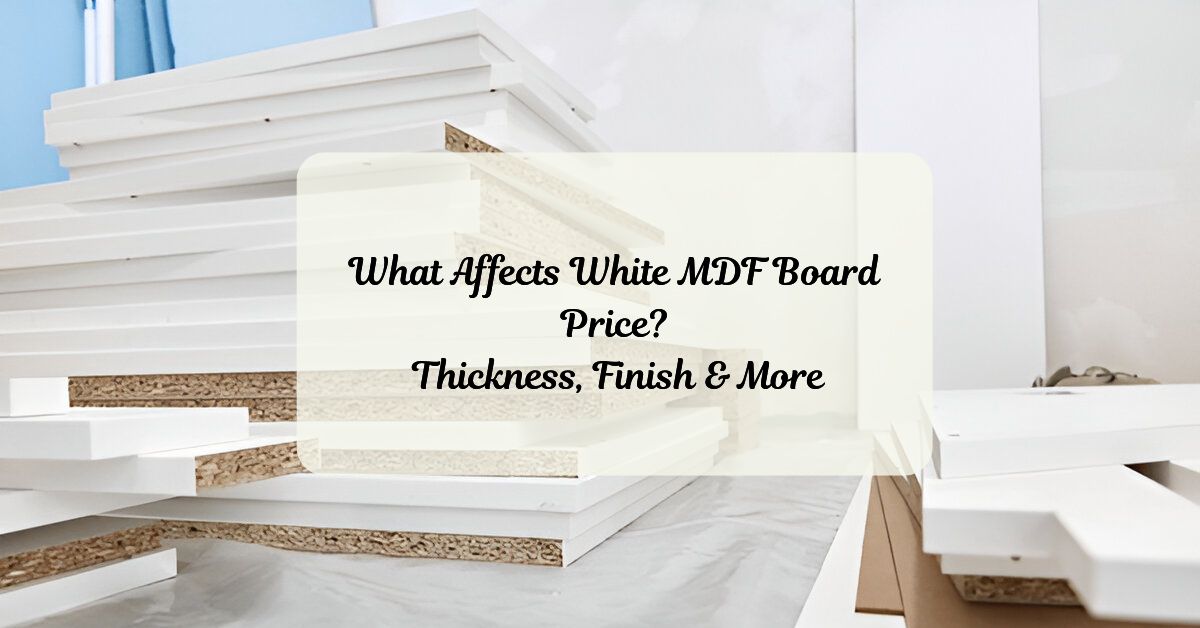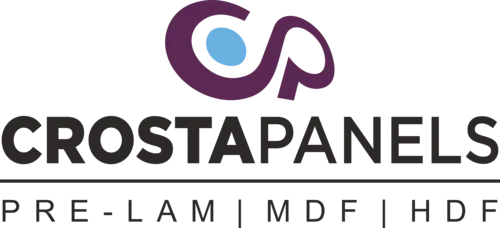Get Support
07496822205
What Affects White MDF Board Price? Thickness, Finish & More

White MDF boards are favored in the furniture manufacturing, cabinetry, and interior design industries due to their smooth appearance, cost, and versatility. However, one of the most frequently asked questions when making a purchase is: What factors specifically influence the pricing of white MDF board?
Knowing what influences the price can help you make a more informed and cost-effective decision if you're a contractor, buyer, or even a do-it-yourselfer. We will dissect the actual elements that affect the cost of white MDF board in this article, including thickness, finish, brands, availability, and even consumer demand.
How Does a White MDF Board Work?
Prior to discussing costs, let's simply define what a White MDF board is. MDF that has been pre-finished with a white melamine or lacquer surface, providing a ready-to-use, sophisticated appearance for contemporary homes, is simply referred to as a white MDF board.
For cabinets, closets, wall panels, and custom furniture, its smooth surface, affordability, and paint-friendly qualities make it the perfect material.
Thickness: The Primary factor affecting price
It makes sense that the price of a thicker board would be higher. MDF boards that are thicker are better suitable for load-bearing applications since they are stronger and more resilient.
Common thicknesses consist of:
1) 6 to 9 mm is the perfect thickness for backing boards and decorative panels.
2) 12 to 15 mm: Fits well on shelves and little cabinets
3) 18 to 25 mm: Used for kitchen cabinets, furniture, and wardrobes
The final cost of white MDF board is influenced by the weight, increased raw material requirements, and increased production costs of thicker boards.
Type of Finish: Pre-laminated or Raw
Raw MDF: Less expensive, but it needs more laminating or painting. Because of its ready-to-install surface and scratch-resistant qualities, white pre-laminated MDF is more expensive.
High Gloss UV Finished MDF: Expensive, high-end, and frequently utilized in opulent interior design. You can save money on labor and finishing materials by selecting a board that is already finished in matte, high gloss, or textured white, but the initial cost is higher.
Density and Grade: Higher Density, Higher Cost. Not every MDF board is made equally. The board's strength and durability are determined by its density, which calculates the mass per unit volume.
Standard MDF: Economical and appropriate for dry environments. Stronger and more resilient to moisture, high-density MDF (HD-MDF) is frequently utilized in bathroom and kitchen applications.HD-MDF, as anticipated, is more expensive, as is the final cost of white MDF board when premium-density material is used.
Brand Value: There is a Cost to Reputation. Prominent producers frequently charge more for their goods, although this is typically justified by improved consistency, quality assurance, and warranties.
Certain brands may provide:
- Antibacterial coating
- Eco-friendly polymers
- Moisture-resistant MDF
Therefore, keep in mind that you are investing in reputation and dependability while assessing the cost of white MDF boards.
Fire Retardance and Moisture Resistance
Choose white MDF boards that can withstand moisture; they have unique chemicals that stop them from warping and swelling. Likewise, MDF boards that are fire-retardant are designed for public buildings, commercial areas, or applications that are susceptible to fire. The cost of these specialist boards is much higher.
In conclusion, intelligent comprehension is the foundation of wise purchasing.
There are other factors besides a label that affect the cost of white MDF board. Thickness, finish, brand, durability, sheet size, and your application requirements all play a part. Whether you're sourcing for a one-time project or a continuing business, being aware of these crucial factors enables you to make an informed choice.
Go no farther than Crosta Panels if you're looking for white MDF boards of the highest caliber at affordable costs. Crosta Panels provides a large selection of MDF options that are suited to any budget and design need, all while maintaining a dedication to consistency, quality, and service.
Get in touch with Crosta Panels right now, and our professionals will assist you in selecting the ideal MDF board for your upcoming masterpiece.

 By: Ethan
By: Ethan